

M13 was first described by Edmond Halley in 1714, but it is visible to the naked eye in dark skies so was probably seen by others over the centuries. Charles Messier catalogued it as number 13 on 1st June 1764. It is some 25,000 light years away in the constellation of Hercules and subtends an angle of about 20 arc-minutes which corresponds to a real diameter of about 150 light years.
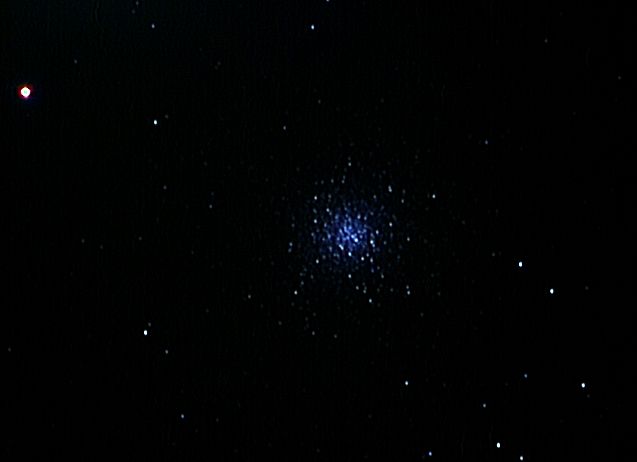 |
M13 captured with my ST80 refractor. This telescope has a focal length of 400 mm giving it a field of view of 31×23 arc-minutes. The picture was taken using my modified Toucam 840K; the original picture was far too blue, so the background was adjusted to black by use of the smart colour-balance feature of PhotoImpact. This gave pictures very similar to, but slightly better than those in which the colours were balanced in RegiStax or manually in Photoshop. The bright star on the left-hand edge of the picture is HD150998 of magnitude 6.83 and is 16' 43" from the centre of the cluster. Date and Time: 1st May 2007 21:12 UT Camera: Modified Toucam 840K Telescope: Skywatcher ST80 (focal length 400 mm) Capture: K3CCDTools. Low gamma, exposure 25 sec, 52% gain Processing: K3CCDTools. 51 frames stacked, unsharp mask 3 pixels, factor 150 |
||
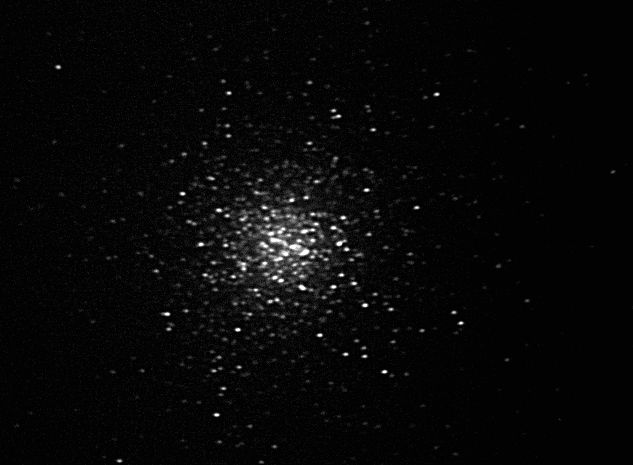 |
And here captured with my LX200 with a 0.33 focal reducer fitted giving it a focal length of 800 mm and a field of view of 15.5 ×11.5 arc-minutes. It was taken with a raw-modified Atik (monochrome) camera and the blue filter from an Astonomik LRGB set. Date and Time: 1st May 2007 22:41 UT Camera: Atik 1-HS Telescope: LX200 with 0.33 focal reducer (focal length 800 mm) Capture: K3CCDTools. Low gamma, exposure 12 sec, 100% gain Processing: K3CCDTools. 15 frames stacked, histogram 20-170, unsharp mask 3 pixels, factor 150 |
||
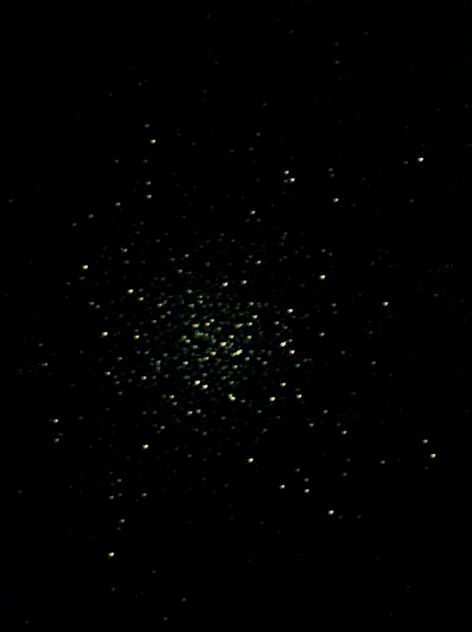 |
This picture is my first DSO picture from my new observatory. I was still not quite conversant with the GE mount onto which I have transferred my LX200 so the camera was orientated 90° from where it should have been. I have rotated the picture to compensate, which accounts for the unusual aspect ratio. The field of view with this camera is about 18×16 arc-minutes. Date and Time: 20th June 2015 22:41 UT (the shortest night of the year here). Camera: DFK 21AF04 Telescope: LX200 with 0.33 focal reducer (focal length 800 mm) Capture: ICCapture, 5.761 sec exposure, gain 1023, 52 frames Processing: RegiStax 5. 40 frames stacked, wavelets 1-2=10 PhotoImpact. Brightness reduced to remove slight sky glow. |
||
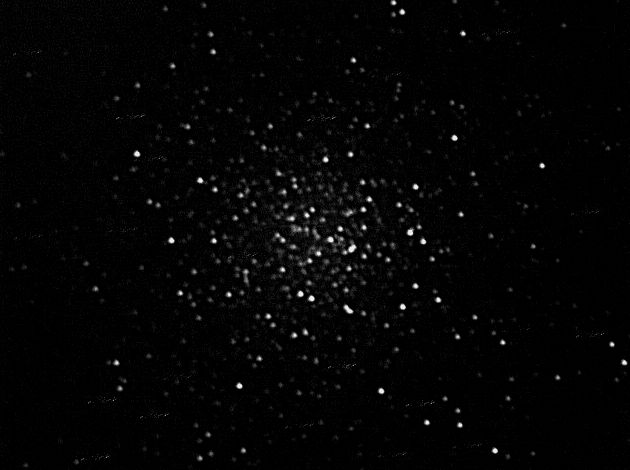 |
This picture was taken with my new 8-inch Ritchey Chrétien OTA. It is not the very first picture; I bought it as ex demo and its collimation was so out of true that the first pictures were unacceptable. Not really knowing what I was doing I fiddled with the adjustments until I got this picture. I am fairly sure it was still not right but at least it was tolerable. I used the same camera as for the picture above but the focal length of this telescope is 1624 mm or about twice that of the LX200 with focal reducer, so the field of view is about 9.7×8.4 arc-minutes. Date and Time: 6th July 2015 23:37 UT. Camera: DFK 21AF04 Telescope: Revelation RC (focal length 1624 mm) Capture: ICCapture, 4 sec exposure, gain 1023, 55 frames Processing: RegiStax 5. 36 frames stacked, wavelets 1-2=10 PhotoImpact. Brightness reduced to remove slight sky glow. |
||
 |
This picture was also taken with the RC a few days later after I had gone through an extensive recollimation. Date and Time: 17th July 2015 22:40 UT. Camera: DFK 21AF04 Telescope: Revelation RC (focal length 1624 mm) Capture: ICCapture, 4 sec exposure, gain 1023, 72frames Processing: RegiStax 5. 56 frames stacked, wavelets 1-2=10 PhotoImpact. Brightness reduced to remove slight sky glow. |
||
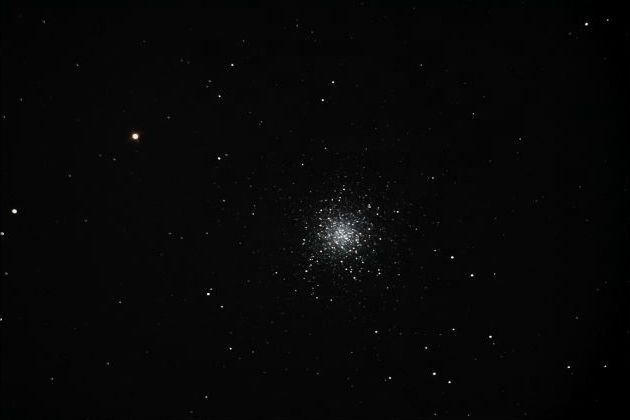 |
This picture was again taken with the RC but this time with a DSRL camera. This has a much larger sensor and consequently a larger field of view, illustrating better that this is indeed a globular cluster. The field of view here is about 45 × 30 arc-minutes. Date and Time: 23rd March 2020 04:17 to 04:23 UT. Camera: Canon 1100D Telescope: Revelation RC (focal length 1624 mm) Capture: Canon-EOS, 30 seconds, ISO6400, 10 frames Processing: RegiStax 5. 10 frames stacked, wavelets 1-2=10, gamma 0.6 |
||
Home Back to DSOs